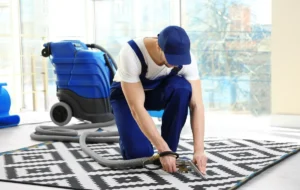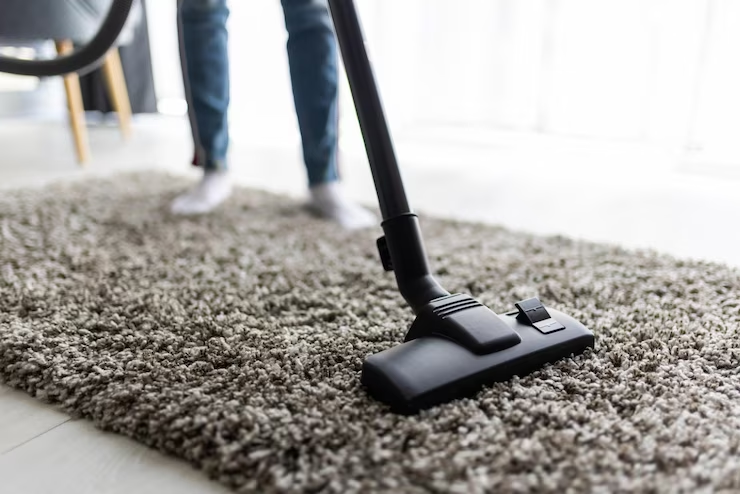Carpet cleaning is an essential aspect of maintaining a clean, healthy, and comfortable environment, whether at home or in a commercial setting. Over time, carpets accumulate dirt, allergens, stains, and odors that can affect indoor air quality and overall aesthetics. A well-maintained carpet not only looks better but also lasts longer and provides a healthier environment. This comprehensive guide covers everything you need to know about carpet cleaning, from routine maintenance to tackling tough stains and determining when to call in professional help.

Guide to Carpet Cleaning
The Importance of Regular Carpet Cleaning
Carpets act as filters, trapping dust, dirt, and allergens from the air. While this helps keep indoor air cleaner, it also means that carpets need regular cleaning to maintain their filtering capacity and appearance. Here are some reasons why regular carpet cleaning is essential:
- Improves Indoor Air Quality: Accumulated dirt, dust, and allergens can become airborne again when disturbed, affecting indoor air quality. Regular vacuuming and deep cleaning help remove these contaminants, promoting a healthier living or working environment.
- Extends Carpet Life: Dirt and debris can wear down carpet fibers over time, causing them to look worn and frayed. Regular cleaning removes abrasive particles, helping to preserve the carpet’s texture and prolong its lifespan.
- Enhances Appearance: A clean carpet enhances the overall aesthetics of a room. Regular cleaning prevents stains and dirt from becoming deeply embedded, keeping carpets looking fresh and vibrant.
- Reduces Allergens and Bacteria: Carpets can harbor allergens, bacteria, and even mold spores, which can cause health issues, especially for those with allergies or respiratory conditions. Regular cleaning minimizes these health risks.
Routine Carpet Maintenance Tips
Routine maintenance is key to keeping carpets looking their best. Here are some practical tips for maintaining your carpets between professional cleanings:
- Vacuum Regularly: Vacuuming is the most effective way to remove surface dirt and debris from carpets. For high-traffic areas, vacuum at least twice a week. Use a vacuum with a HEPA filter to trap small particles and allergens.
- Address Spills Immediately: Quick action is crucial when dealing with spills. Blot (don’t rub) the spill with a clean cloth or paper towel to absorb as much liquid as possible. Use a mild carpet cleaner to remove any remaining stain, and rinse with water.
- Use Doormats and Area Rugs: Place doormats at all entrances to reduce the amount of dirt tracked onto carpets. Area rugs in high-traffic areas can also help protect carpets and make cleaning easier.
- Rearrange Furniture Periodically: Moving furniture occasionally can help prevent wear patterns from developing in high-traffic areas and allows for more even distribution of foot traffic.
- Deep Clean Regularly: In addition to routine vacuuming, carpets should be deep cleaned every 6-12 months, depending on traffic and usage. This can be done using rental equipment or hiring a professional service.
Tackling Tough Stains: Common Solutions
Stains are inevitable, but they don’t have to be permanent. Here are some common types of stains and effective methods for removing them:
- Wine and Coffee Stains: Blot the stain immediately with a clean cloth to remove as much liquid as possible. Apply a mixture of vinegar, water, and mild detergent, then blot again. Repeat until the stain is removed, then rinse with water.
- Pet Stains: Remove any solid waste, then blot the area to absorb excess moisture. Apply a pet-specific stain remover or a mixture of vinegar and water, then blot dry. Baking soda can help neutralize odors; sprinkle it on the stain, let it sit, and vacuum it up.
- Oil and Grease Stains: Sprinkle baking soda or cornstarch on the stain to absorb the oil. Let it sit for 15 minutes, then vacuum. Apply a small amount of dish soap mixed with water to the stain, blot, and rinse.
- Ink Stains: Dab a cotton ball soaked in rubbing alcohol on the stain, being careful not to rub. Blot gently until the ink begins to lift, then rinse with water.
- Gum and Wax: Freeze the gum or wax with an ice cube until it hardens, then gently scrape it off with a spoon or butter knife. Vacuum any remaining pieces.
When to Call a Professional Carpet Cleaner
While regular maintenance and spot cleaning are essential, there are times when professional carpet cleaning is the best option:
- Deep Cleaning Needs: Over time, even the best-maintained carpets accumulate dirt and stains that regular cleaning can’t fully remove. Professional cleaners use advanced equipment and techniques to deep clean carpets, restoring them to near-new condition.
- Stubborn Stains and Odors: If you’ve tried everything and still can’t remove a stain or odor, a professional carpet cleaner has the tools and expertise to tackle tough stains and deep-set odors effectively.
- Allergen Removal: For homes with allergy sufferers, professional cleaning can help remove allergens like dust mites, pet dander, and mold spores more effectively than routine cleaning methods.
- Water Damage Restoration: If carpets are affected by flooding or leaks, professional cleaning is essential to remove moisture and prevent mold growth. Professionals have the equipment to thoroughly dry carpets and treat them for potential mold.
Choosing the Right Professional Carpet Cleaning Service
When selecting a professional carpet cleaning service, consider the following factors:
- Experience and Reputation: Look for a company with a solid track record and positive reviews. Experienced professionals are more likely to provide high-quality service.
- Cleaning Methods: Different companies use different cleaning methods, such as steam cleaning, dry cleaning, or hot water extraction. Choose a service that uses a method suitable for your carpet type and cleaning needs.
- Certifications and Training: Ensure the company has trained and certified technicians who are knowledgeable about different carpet types and cleaning techniques.
- Eco-Friendly Practices: If you prefer environmentally friendly options, look for a company that uses green cleaning products and practices.
Conclusion
Carpet cleaning is an essential part of maintaining a healthy and attractive home or business environment. By following routine maintenance tips, addressing stains promptly, and knowing when to call in professionals, you can keep your carpets looking their best for years to come. Regular carpet care not only enhances the appearance of your space but also promotes a healthier indoor environment, extending the life of your investment.


Recent Comments